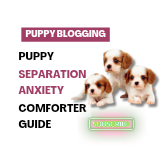Teaching Your Dog 'Yes' and 'Free' Commands
- Apr 30, 2022
- 2 min read
Updated: Feb 20
Communication with your canine companion goes beyond the basics of sit, stay, and come. Adding commands like "yes" and "free" to your dog's repertoire not only enhances their training but also deepens the understanding between you and your furry friend. In this post, we'll explore the significance of these commands and provide practical tips on how to teach your dog "yes" and "free."

The Power of Positive Reinforcement: Positive reinforcement is the cornerstone of effective dog training. Adding affirmative cues like "yes" to your training toolbox allows you to communicate approval and signal to your dog that they've done something right. Similarly, "free" is a release command, giving your dog the green light to stop a specific behaviour or task.
Teaching 'Yes':
Choose a Distinct Cue: Decide on a clear and distinct cue for "yes." It could be a specific word, a clicker, or a hand signal. When saying the word, keep it cheery and short so it is distinctive. Consistency is key to avoid confusion.
Timing is Everything: Use the "yes" cue immediately after your dog performs the desired behaviour. The key is to mark the exact moment they do what you want, reinforcing the connection between the action and the reward.
Reward and Praise: Follow up the "yes" cue with a reward, whether it's a treat, praise, or a combination of both. This positive reinforcement strengthens the association between the cue and the positive outcome.
Repeat and Reinforce: Practice the "yes" command in various situations and gradually increase the difficulty. Consistent repetition reinforces the cue, making it a reliable part of your dog's training vocabulary.
Teaching 'Free':
Select the Release Word: Choose a release word, such as "free" or "release." This word signals to your dog that they are no longer required to maintain a specific position or perform a particular task.
Introduce the Command: Use the release word when you want your dog to stop a behaviour or when they have completed a command. For example, if your dog is in a stay position, say "free" to let them know they can move.
Encourage Movement: After using the release word, encourage your dog to move or engage in a different activity. This helps them understand that the command signifies a change in their current task.
Reward and Reinforce: Always follow the release command with positive reinforcement. This could be praise, a treat, or the opportunity to engage in a favourite activity. This reinforces the concept that following the release command is a positive experience.
Benefits of 'Yes' and 'Free' Commands:
Enhanced Communication: "Yes" allows you to communicate approval and acknowledgment, while "free" facilitates clear communication regarding the end of a task or behaviour.
Increased Motivation: Positive reinforcement boosts your dog's motivation to perform desired behaviours, making training more effective and enjoyable.
Improved Bonding: The use of positive cues strengthens the bond between you and your dog, fostering trust and cooperation.
Integrating commands like "yes" and "free" into your dog's training repertoire is a wonderful way to enhance communication and create a positive training environment. Through consistent practice, patience, and positive reinforcement, you'll not only teach your dog valuable commands but also deepen the unique bond that exists between you and your four-legged companion. Happy training!










Comments